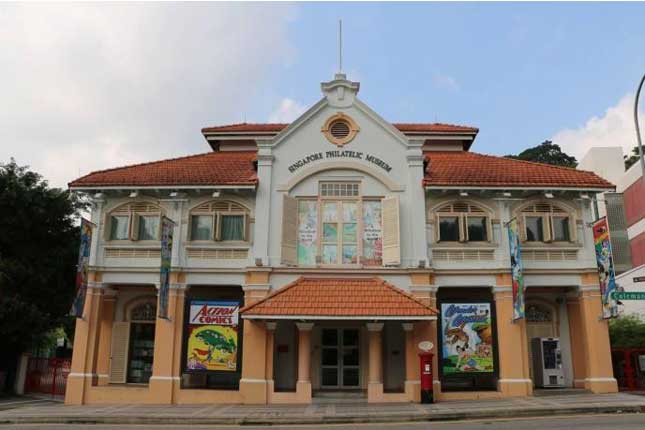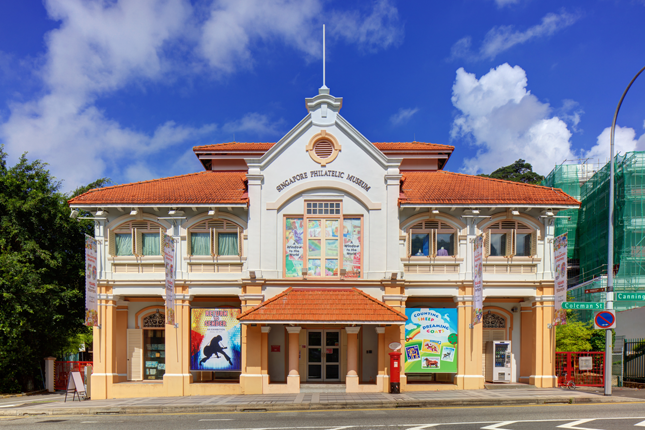By Lucille Yap, Senior Curator, Singapore Philatelic Museum
Images: Singapore Philatelic Museum
BeMuse Volume 3 Issue 3 - Jul to Sep 2010
G.R. Lambert (b. 1846) from Dresden, Germany, is a name closely associated with the early photographic history of Singapore. He was one of the earliest commercial photographers who had made a name in Singapore and the neighbouring regions, and was amongst the first to establish a permanent photograph studio in Singapore in the 1880s.

The photographic company he set up, G.R. Lambert & Co., had the most extensive inventory of contemporary views of Singapore, the Malay Peninsula, Borneo and Sumatra. Comprising about 3,000 subjects, it was known to be one of the finest collections in the East. G.R. Lambert & Co. also maintained a high reputation for artistic portraiture.
G.R. Lambert & Co.’s works are valuable historical records of the growth and developing topography of Singapore as a British colonial centre. The impressive stock of photographs and postcards produced by G.R. Lambert & Co. is today treasured as archival photographic documents providing a visual reference of what Singapore was like more than a century ago.

CAPTURING IMAGES Of THE COMMUNITY
The first mention of G.R. Lambert & Co. was an advertisement placed in the Singapore Daily Times by Mr Lambert in April 1867 to inform the community of Singapore that he had opened a photographic firm, G.R. Lambert & Co., on No. 1, High Street. But he seemed to have left Singapore, only to return a full decade later, in May 1877, and a similar announcement was placed again in the local press.
From his return until the end of World War I, G.R. Lambert & Co. produced high quantities of large format original photographs (8 x 10 in or 20 x 27.5 cm) featuring landscapes and people of Singapore for sale to the public. These photographs can be easily identified by the company’s logo which was dry-stamped on the lower right-hand corner of each photograph.

G.R. Lambert & Co. was also extensively patronised by the British colonial authorities to record political occasions and official visits. The firm was not only famous in Singapore but also in the region. It was also appointed as official photographers to the King of Siam, and also the Sultan of Johore. This appointment was proudly printed on the back of a photograph taken in Singapore in 1894.

Image courtesy of Prof Cheah Jin Seng.
At the end of the 19th century, G.R. Lambert & Co. had become by far the largest and most successful photographic studio in Southeast Asia. The company operated from the head office at Gresham House, Battery Road and branch studio in Orchard Road, and had overseas branches in Kuala Lumpur, Bangkok, and Sumatra.

It is difficult to make any accurate assessment of Mr Lambert’s own photographic contribution as his presence in Singapore was sporadic. The firm was managed by Mr Alexander Koch, who had entered the business as an assistant around 1883- 1884. Mr Koch’s position as manager was later taken over by Mr H.T. Jensen, who ran the business from around 1908-1910. The company was subsequently managed by a number of managers who were operating more as caretakers. The company closed down in 1918.
FROM PHOTOGRAPHS TO PICTURE POSTCARDS
At the turn of the 20th century, G.R. Lambert & Co. and other professional photographers were challenged by the rise of family photographers and amateur photographic societies. As a result, they quickly diversified their photographic business into the production of postcards and the servicing of amateur needs.

The new century ushered in a profitable postcard craze which reached its greatest height of popularity from 1906 to 1913, a period which collectors refer to as the Golden Age of Picture Postcards.

The large photographic business and the vast catalogue of photographs which G.R. Lambert & Co. produced fuelled the lucrative picture postcard trade. It was said that the company had a turnover of about quarter of a million cards a year.

The first picture postcard of Singapore was produced in 1897 by G.R. Lambert & Co. It was not the same as the photograph postcards we have today. They were in fact real photographs pasted on the blank sides of printed postal stationery postcards.

The outbreak of the war in Europe in 1914 brought a complete halt to the picture postcard collecting craze and effectively brought an end to the Golden Age of Singapore Picture Postcards (1906-1913). G.R. Lambert & Co. ceased operation when the war ended in 1918.
From 2 August 2010 to 2 January 2011, the Singapore Philatelic Museum displayed a collection of photographs and picture postcards by G.R. Lambert & Co donated by Mr Koh Seow Chuan.

















